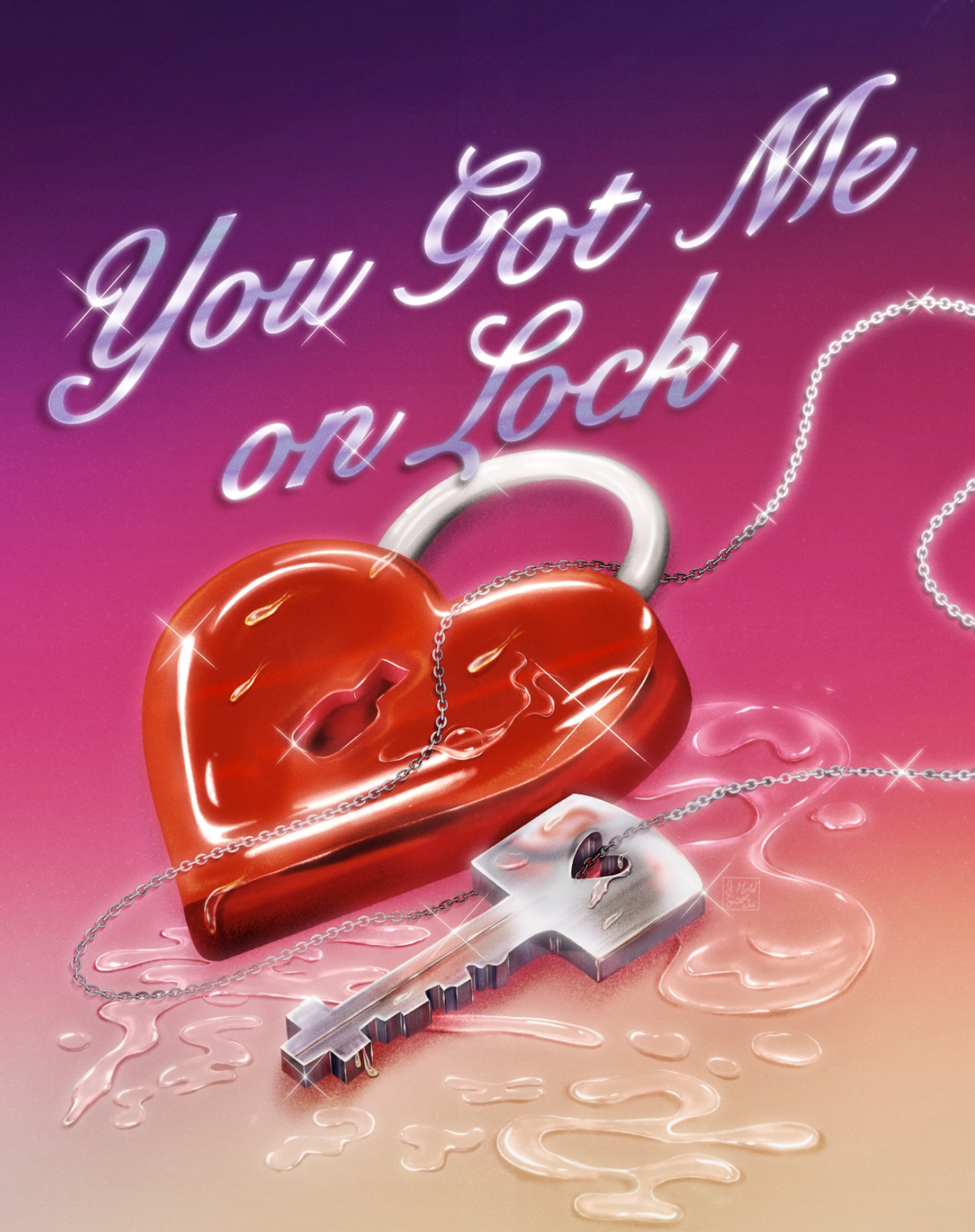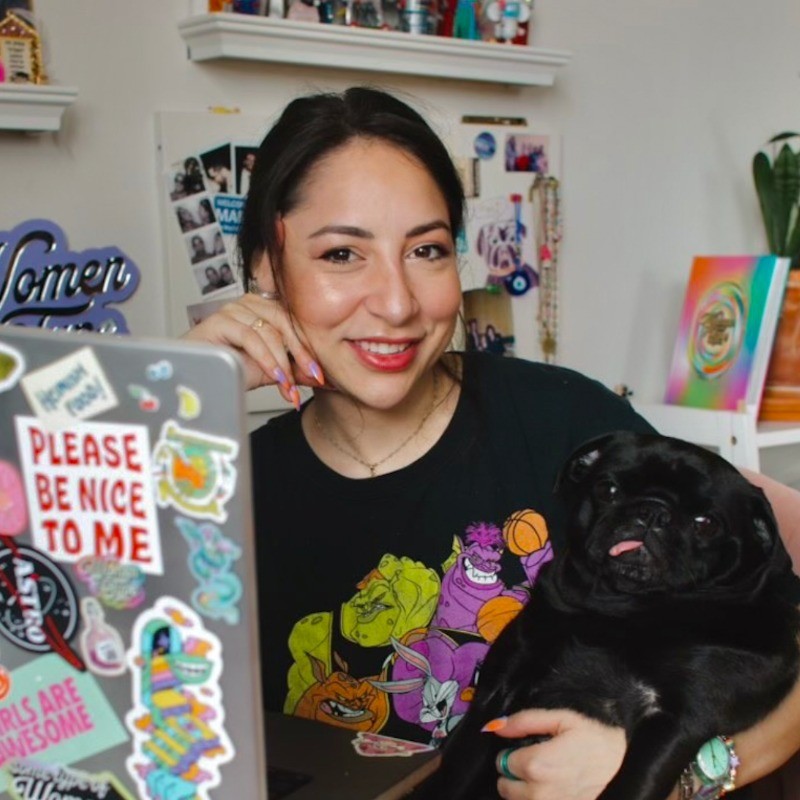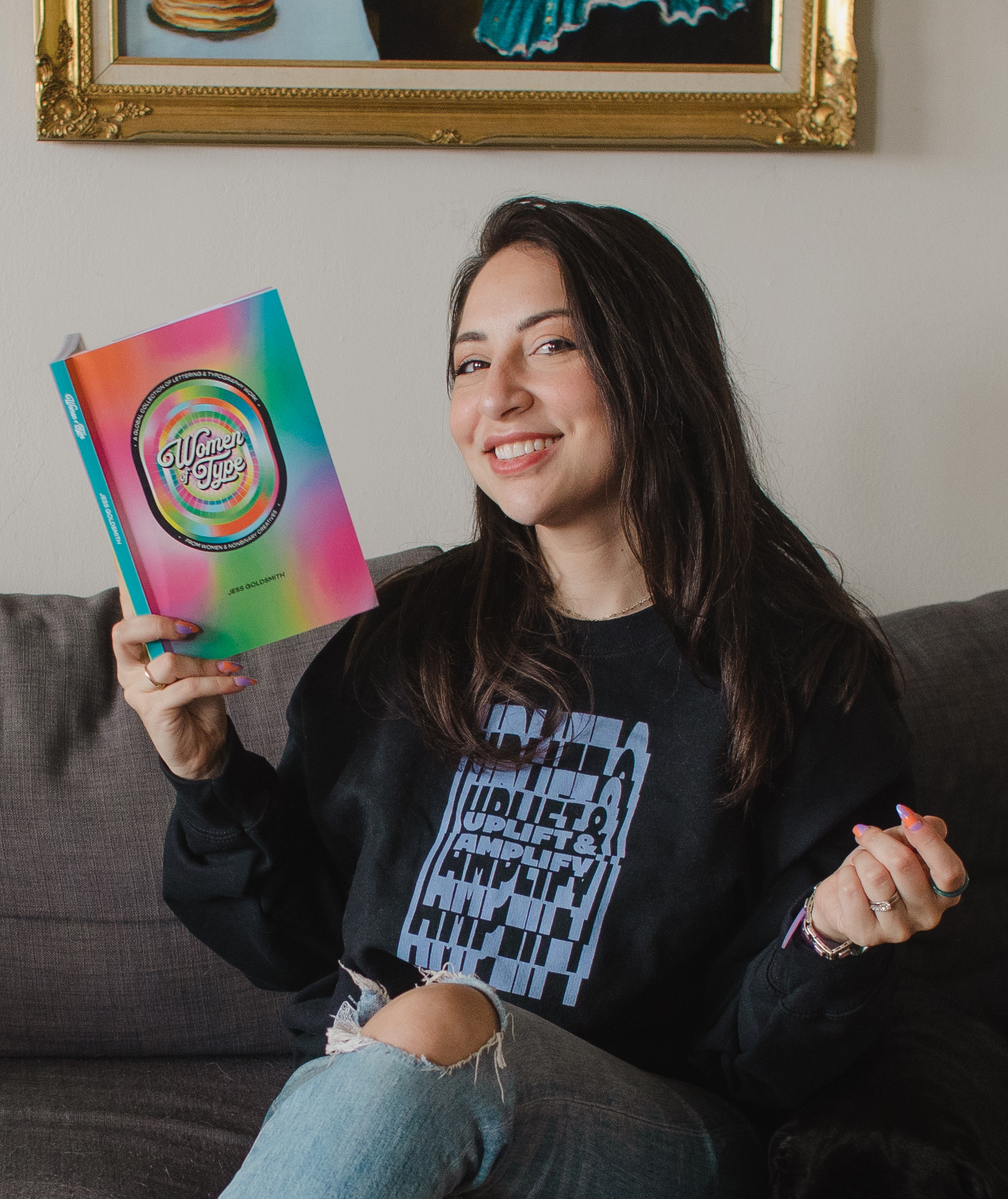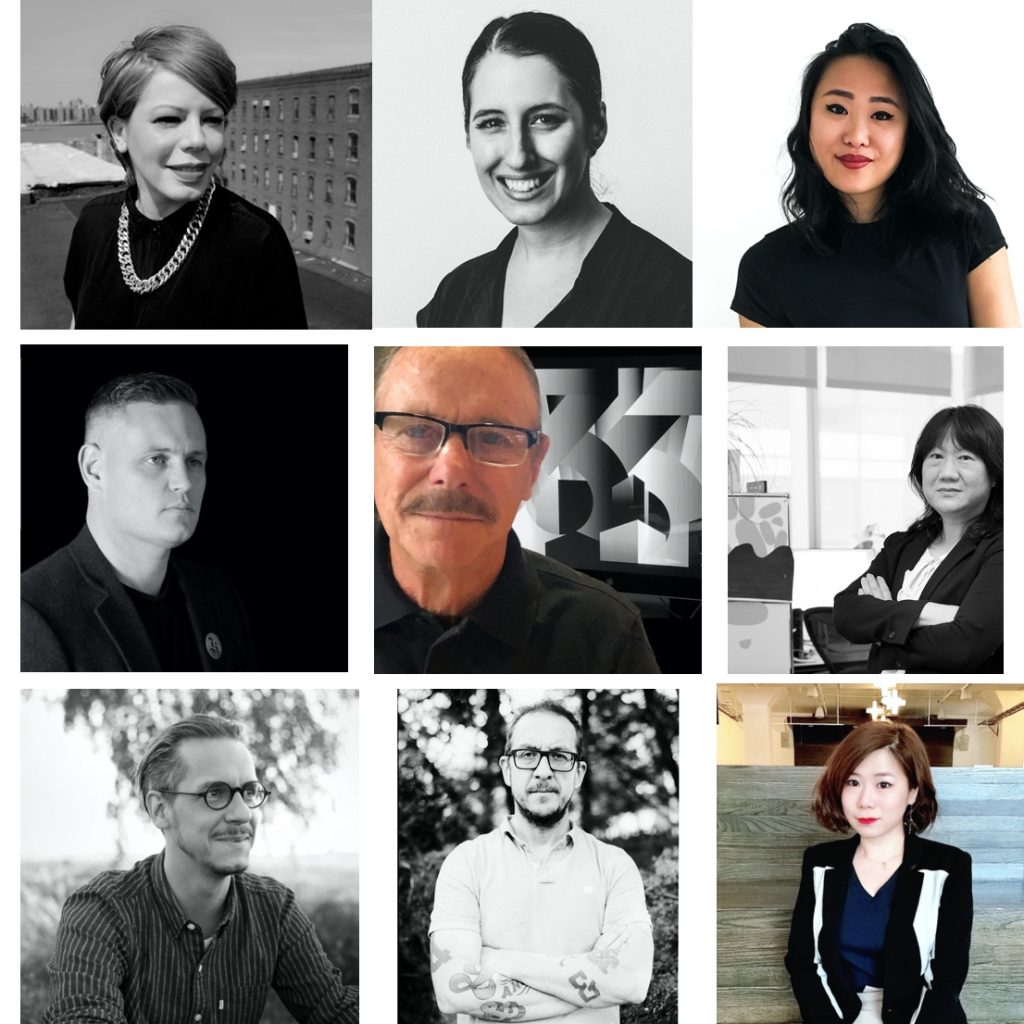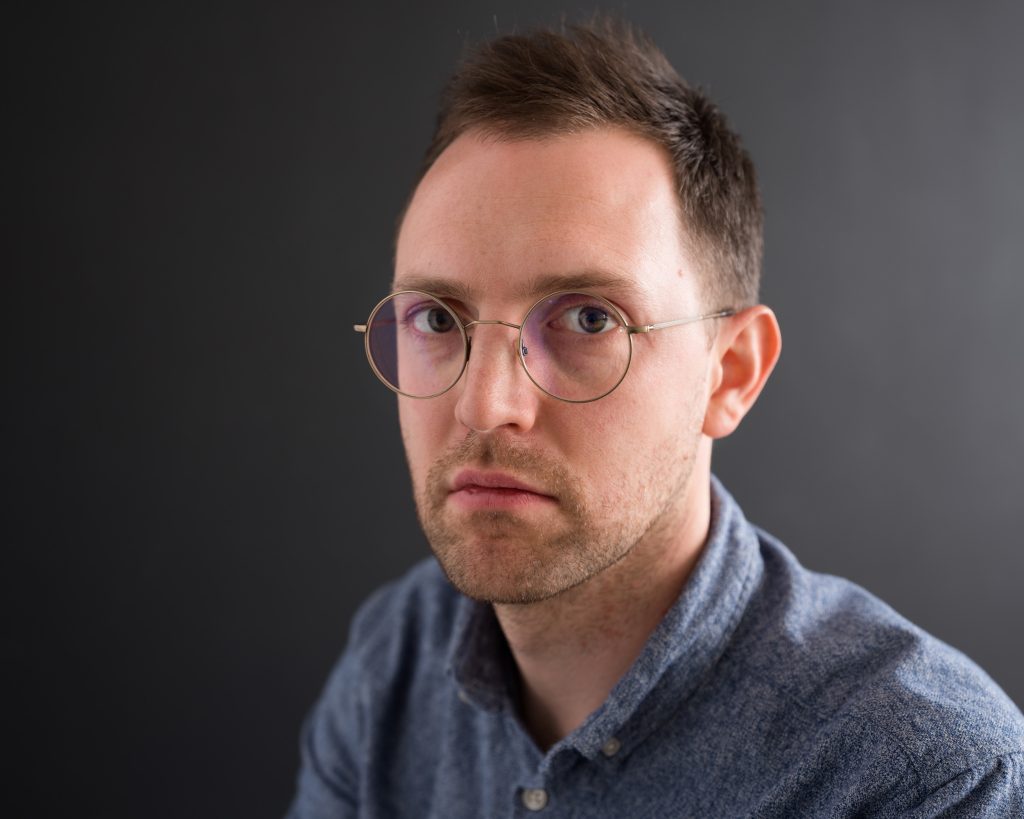Type and lettering are in all of our lives, from the time we first picked up a crayon to learning how to write our names. So, what about this world interested you in pursuing it professionally?
My interest in the lettering world is definitely a culmination of a few outstanding factors in my life. I’ve always been naturally attracted to creativity and curiosity as a kid, and it never really went away. The feeling of “Oooh, what if we do this?” or “What would x look like?” is still very much part of my daily adult life.
My mother was a graphic designer before I was born, and one of her specialties was typography. She naturally passed on the love of letters to me. I grew up in Brooklyn with a lot of graffiti around on the streets, and when I first started playing around with letters, there was that influence too.
I was encouraged to follow a creative path from a very young age. I know that can be rare, so I’m lucky and grateful to my parents for pushing me to be my best creative self. They didn’t care what I did as long as I was a positive contributor to society.
We have a very limited 26 letters in the English alphabet and an infinite way of expressing ourselves with those letters. I think that’s really inspiring in so many ways.
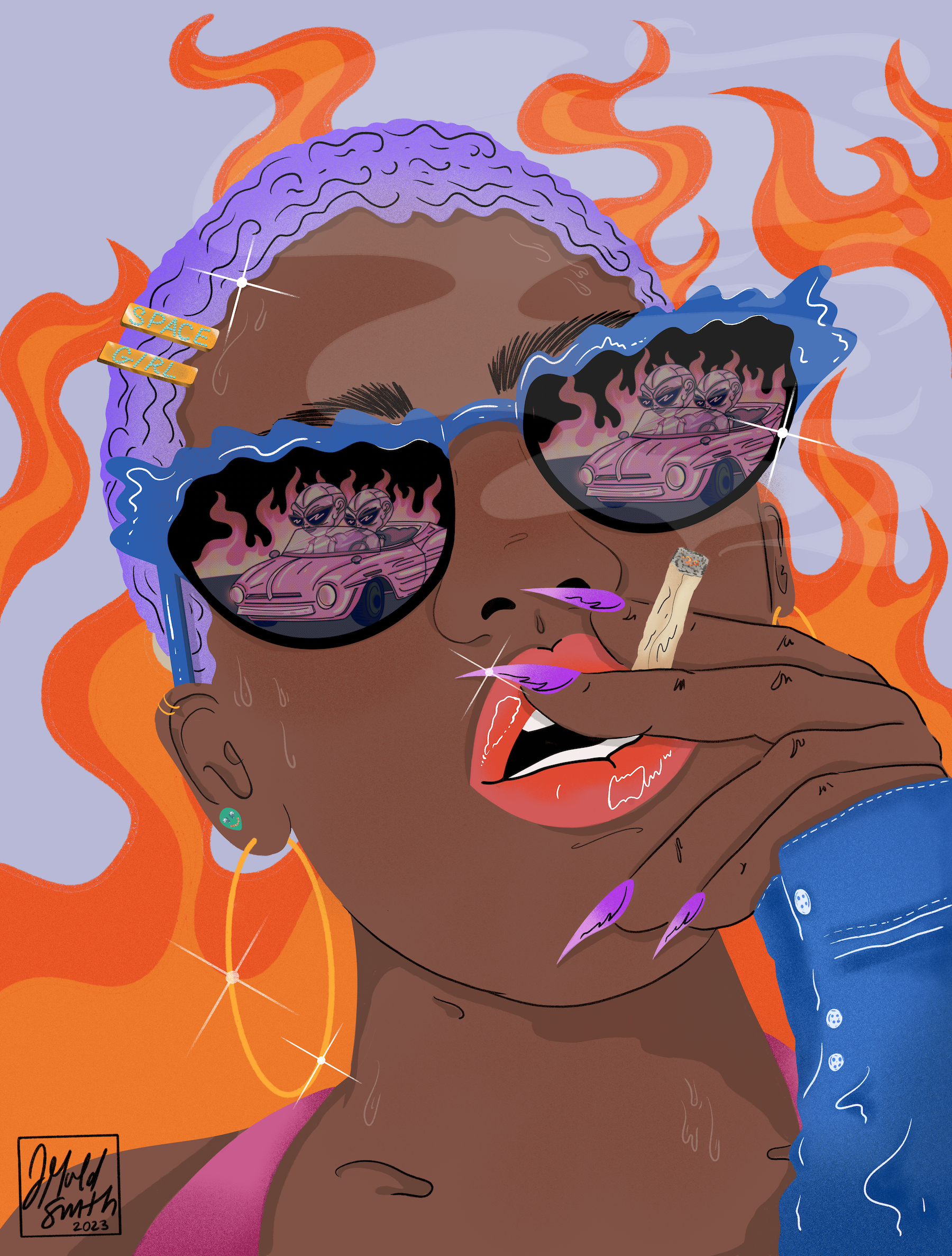
Did you have any perceptions about women in this field?
My professional life came into bloom during a time when, as a society, highlighting women in our industries was starting to become a lot more common. I was always inspired by my mom and her lettering doodles she would leave on envelopes after a long phone call, but as far as outside factors go, I was inspired by the “anonymous” artistry of graffiti letters and old handpainted signs around Brooklyn. I don’t think I had anyone to look up to before social media took the stage.
Instagram brought me to the creative community to find other women who are immensely talented and inspirational. Amy and Jennifer Hood of Hoodzpah Design were early inspirations for me in terms of typography and fonts. Mary Kate McDevitt’s use of color and texture inspired me to experiment with a lot of my work.
Have you faced any challenges as a woman in the type community?
Like so many industries, type and lettering is still very male-dominated, and with that comes the challenge of having to navigate as “other.” That can mean anything from changing the way I communicate, the type of work I put out, or wage transparency. The most common conversation I have about this topic is written communication. I love using exclamation points!! because I am genuinely excited to be here!!! I am enthusiastic! But that seems to be something that is expected to be toned down.
I feel very lucky to live in a time where female voices are being amplified, and our stories are being told more often. We have a long way to go as a global society, but we’re going in the right direction.
“I feel very lucky to live in a time where female voices are being amplified, and our stories are being told more often.”
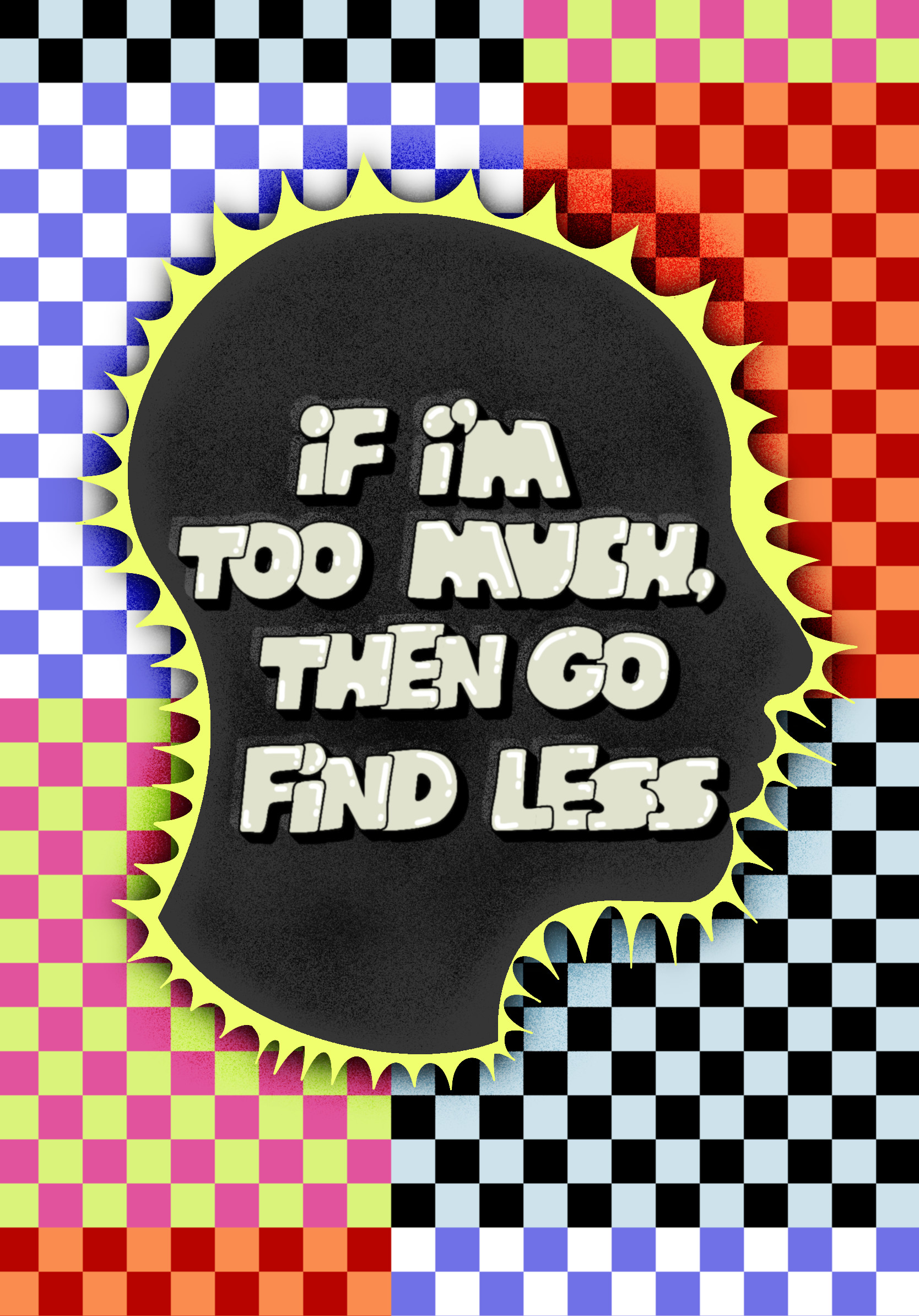
Can you pinpoint the exact moment when you felt you had made it and were getting the attention you desired?
I’ve had multiple moments like this throughout my career. It’s important to me to continue to set up goals for myself and reset the bar at different chapters of my life. The first time I felt like I “made it” I was in my early 20s, and my art practice at the time was painting and making housewares. I was selling them at craft fairs and nannying to make rent. I was sitting on the floor of my tiny shitty room that I rented in the ugliest apartment with the scariest roommates, eating cold leftover Thai food, and I thought to myself, “Wow, I really made it! I’m a working artist!”
The next time I felt that was when I landed my first big household-name client for an illustration job. I felt like my work was finally going to be seen, and I knew adding this work to my portfolio would be the jump I needed to get to the next level of my career.
The release of my book, Women of Type, solidified my place in the lettering and type industry and validated so much of the work I’ve done for years - both in my creative practice and within the community. Being able to share my platform with other talented women and nonbinary creatives made it even more exciting and meaningful to me.
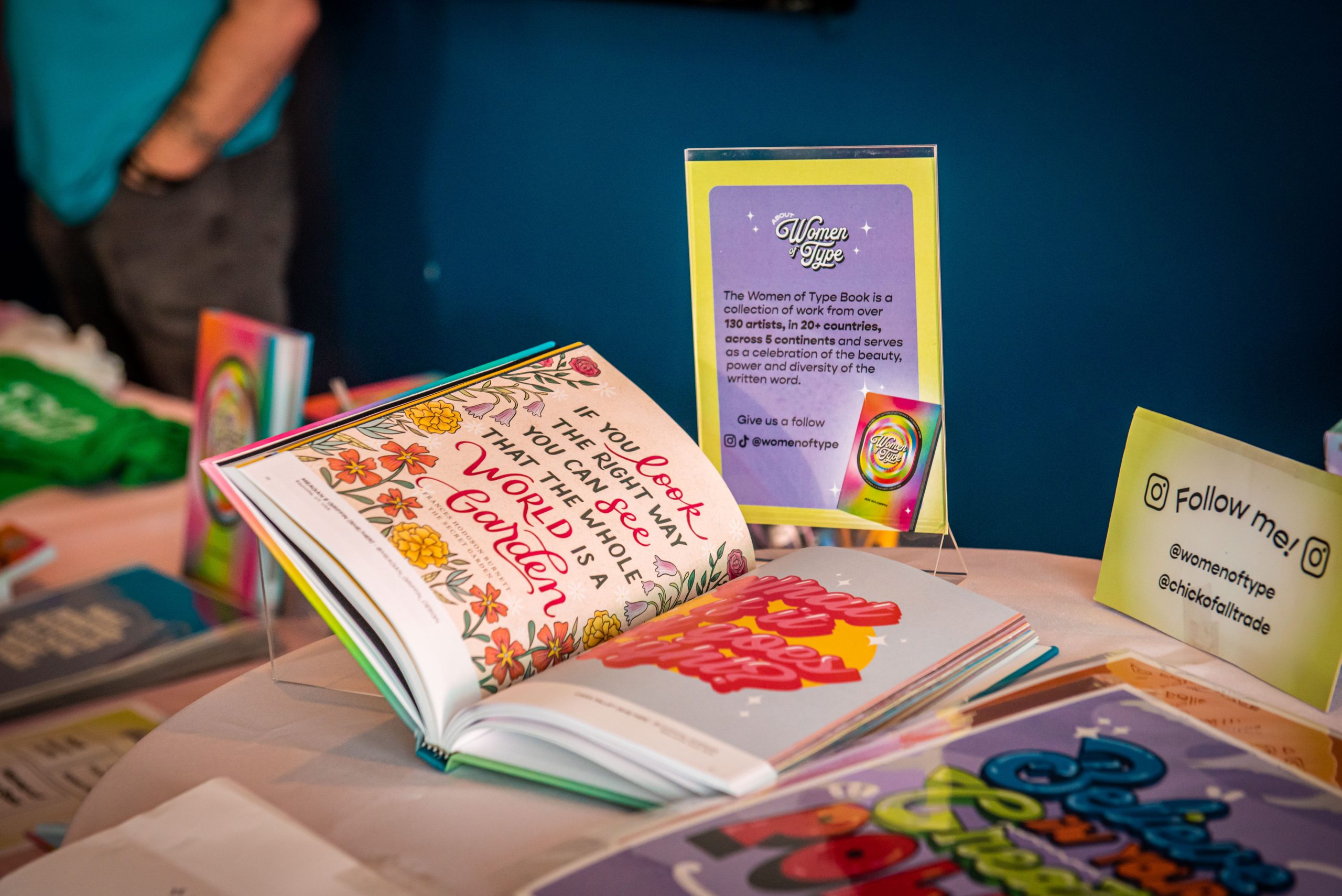
What inspired you to create a book about women in type?
Okay, I’ll answer this question backward. The final product shockingly came out exactly as I envisioned. I say shockingly because rarely, with a large project like this, working solo and as a first-time self-publisher does this happen. I know the Women of Type (WOT) community is global, but I didn’t realize how far it reached until the submissions started rolling in, and they were from all over the world.
I was inspired to curate this book because of the community. The sheer number of talented individuals in the WOT community is incredible, and I wanted to have another outlet they could use as a point of reference for their own work, as well as a curation of inspiration both in terms of visual content and the words themselves.
“The sheer number of talented individuals in the WOT community is incredible, and I wanted to have another outlet they could use as a point of reference for their own work, as well as a curation of inspiration both in terms of visual content and the words themselves.”
I am SO proud of this book and the amount of work that went into it, both on my end and from the contributing artists.
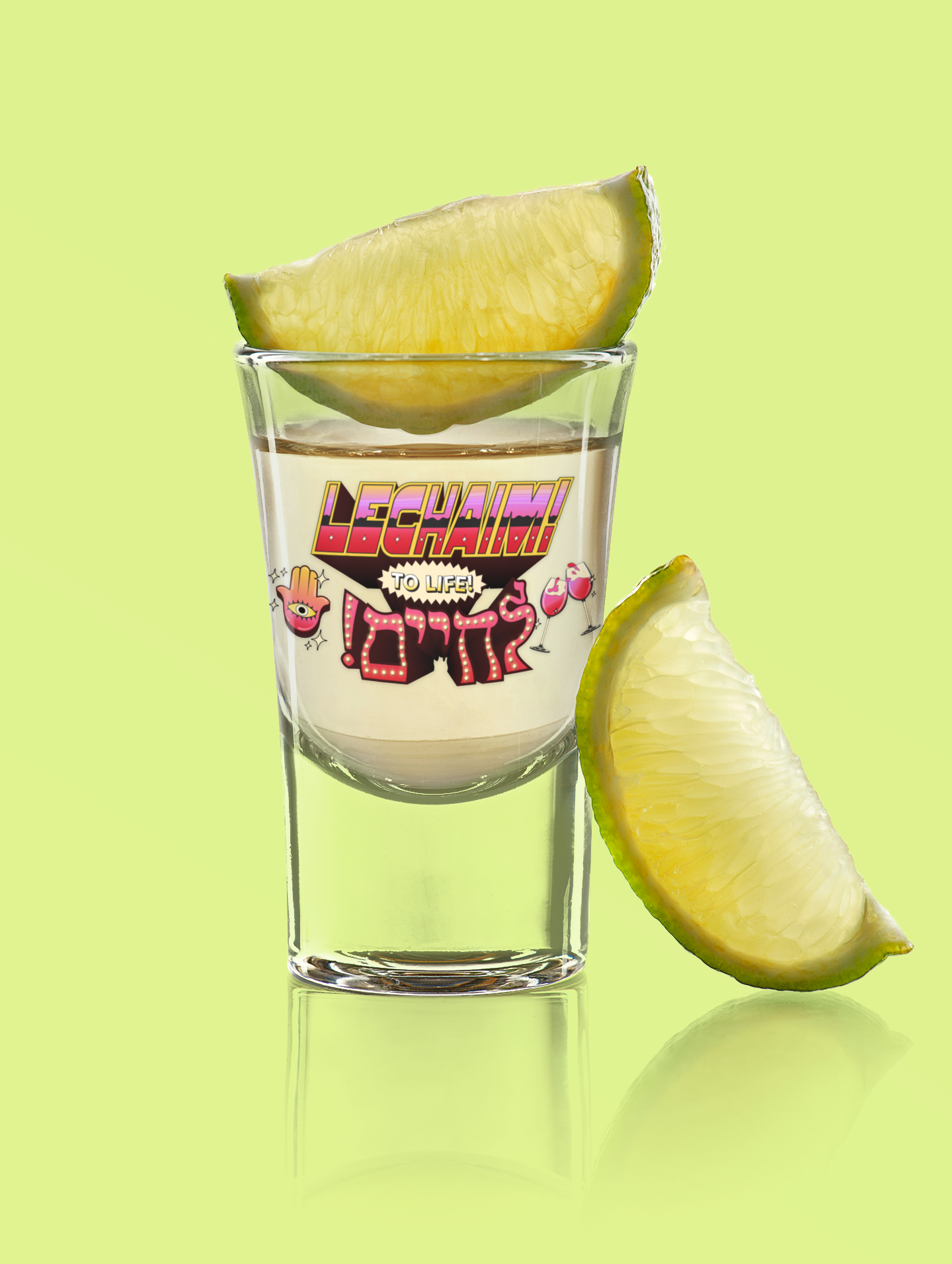
Where can aspiring women typographers look for resources to help them in their careers?
- Follow Women of Type on IG and sign up for the newsletter.
- The internet is great, but meet people in real life too. See their faces and talk to them. Go to events and in-person workshops. Make friends, make memories, and make art.
- If IRL meetups aren’t accessible to you, you can join a Slack channel, a Discord server, or similar groups. Can’t find what you’re looking for? Create one yourself! Ask a few people if they’d be interested in joining to share work, talk shop, and compare techniques.
- Online resources, workshops, and books from communities like Women of Type, Goodtype, Hoodzpah, and Typism. Many are free!
- (This is less community and more just a tip in general) Take a look at the world around you and find what inspires you. It doesn’t need to be type-related in order to inspire your type and letterforms.
What advice would you share with young women who are interested in making a career out of lettering?
I’ve said it before, and I’ll say it again. Practice, practice, practice, and practice. And when you feel like you’re finally done practicing, practice some more!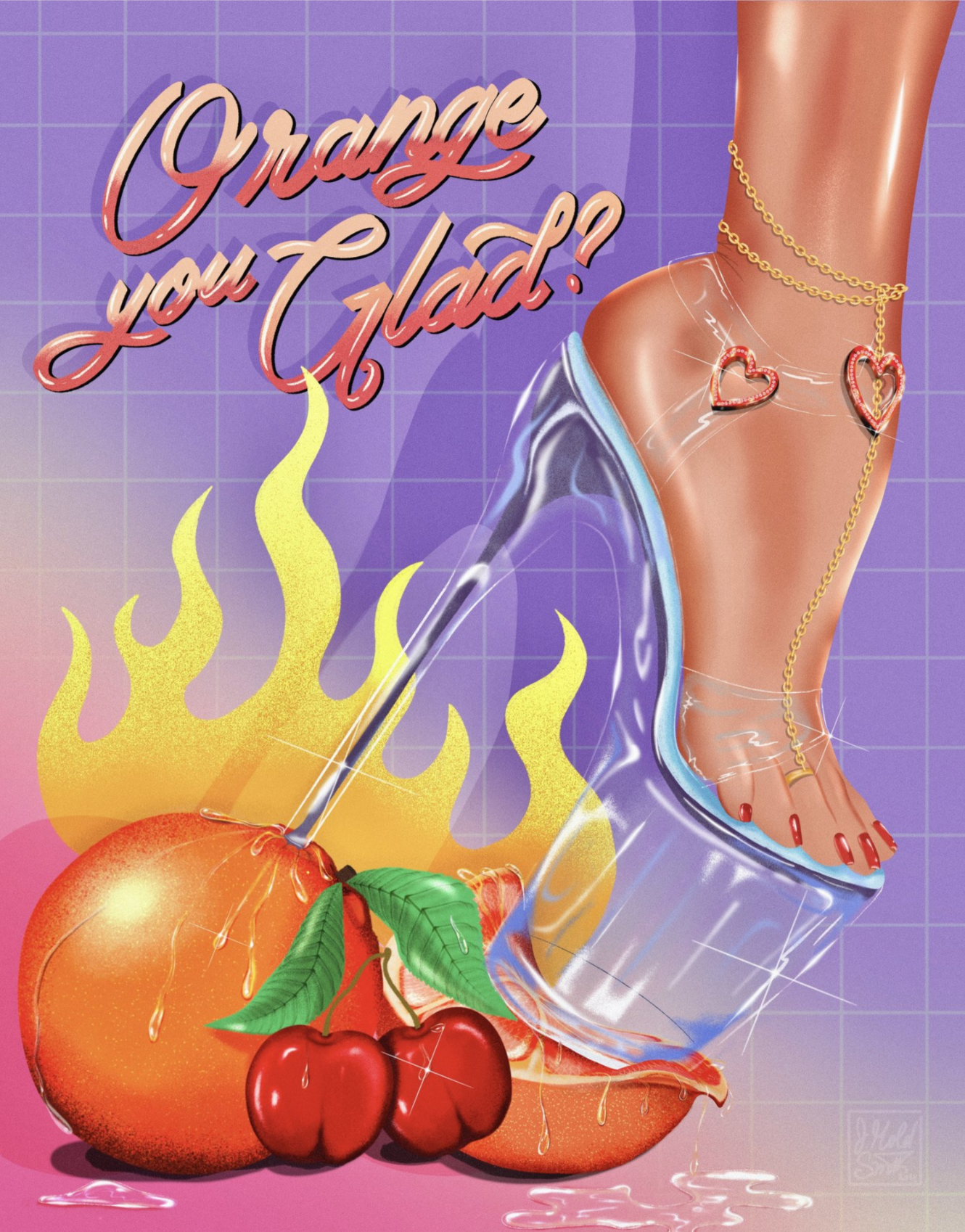
What is new or emerging in typography today?
I’m seeing a lot more use of experimental and kinetic type these days! Seeing funky letterforms in places that would typically be using more traditional fonts has been so fun to see. TDC has been an excellent place for me to find this type of work, as well as portfolio sites like Behance and Dribbble.
Please share your favorite piece of work.
I made the piece below experimenting with a style that’s newer to me with this semi-realistic wet chrome look. I typically draw my letters, but I used a classic script font for this one. I added a chrome effect using a gradient fill and a slight drop shadow for some dimension. It’s one of my more simple pieces in terms of type, but effective. I love the use of a slight blur and a soft grain to give pieces a little bit of a vintage feel, and you’ll see that, plus sparkles, on most of my work as my signature touch to finish off a piece.
